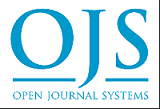Nutritional status and anemia in pregnant women: A systematic review
DOI:
https://doi.org/10.33024/minh.v7i5.493Keywords:
Anemia, Nutrition, Pregnant WomanAbstract
Background: Anemia in pregnant women is a significant global health problem. Anemia in pregnant women is closely related to morbidity and mortality in mothers and their babies.
Purpose: To find out in depth the factors that influence anemia in pregnant women.
Method: The study began with data retrieval from PubMed, using the keywords "Nutritional status", "anemia", and "pregnant women", limiting inclusion to English-language articles published between 2014 and 2024. The use of the Perish and Publish application facilitated the initial literature selection, followed by VOSviewer analysis to visualize trends and patterns in the literature. Furthermore, the PRISMA 2020 framework was used for a more systematic and focused selection, screening, and assessment of the literature.
Results: This study revealed that risk factors for anemia in pregnant women were awareness (knowledge), food consumption practices, pica, BMI, income, assertiveness, and number of pregnancies. In-depth insights into nutritional status and anemia among pregnant women, underscore the importance of effective nutrition interventions and tailored health strategies.
Conclusion: The importance of education or counseling for pregnant women to prevent anemia during pregnancy. These findings contribute significantly to the formulation of evidence-based health policies and practice recommendations, with the ultimate goal of improving maternal and newborn health.
Downloads
Published
How to Cite
Issue
Section
License
Copyright (c) 2024 Malahayati International Journal of Nursing and Health Science

This work is licensed under a Creative Commons Attribution-ShareAlike 4.0 International License.









